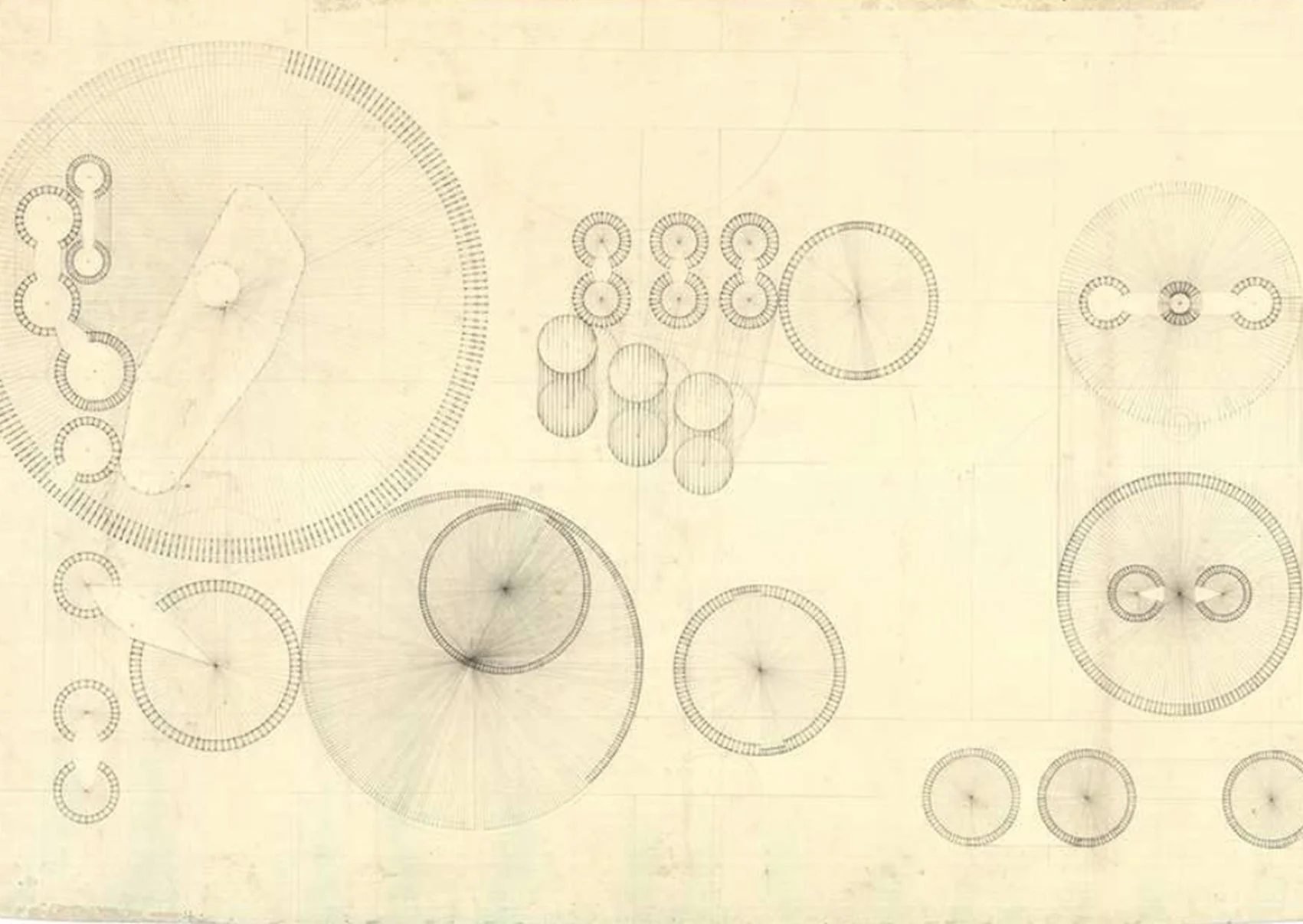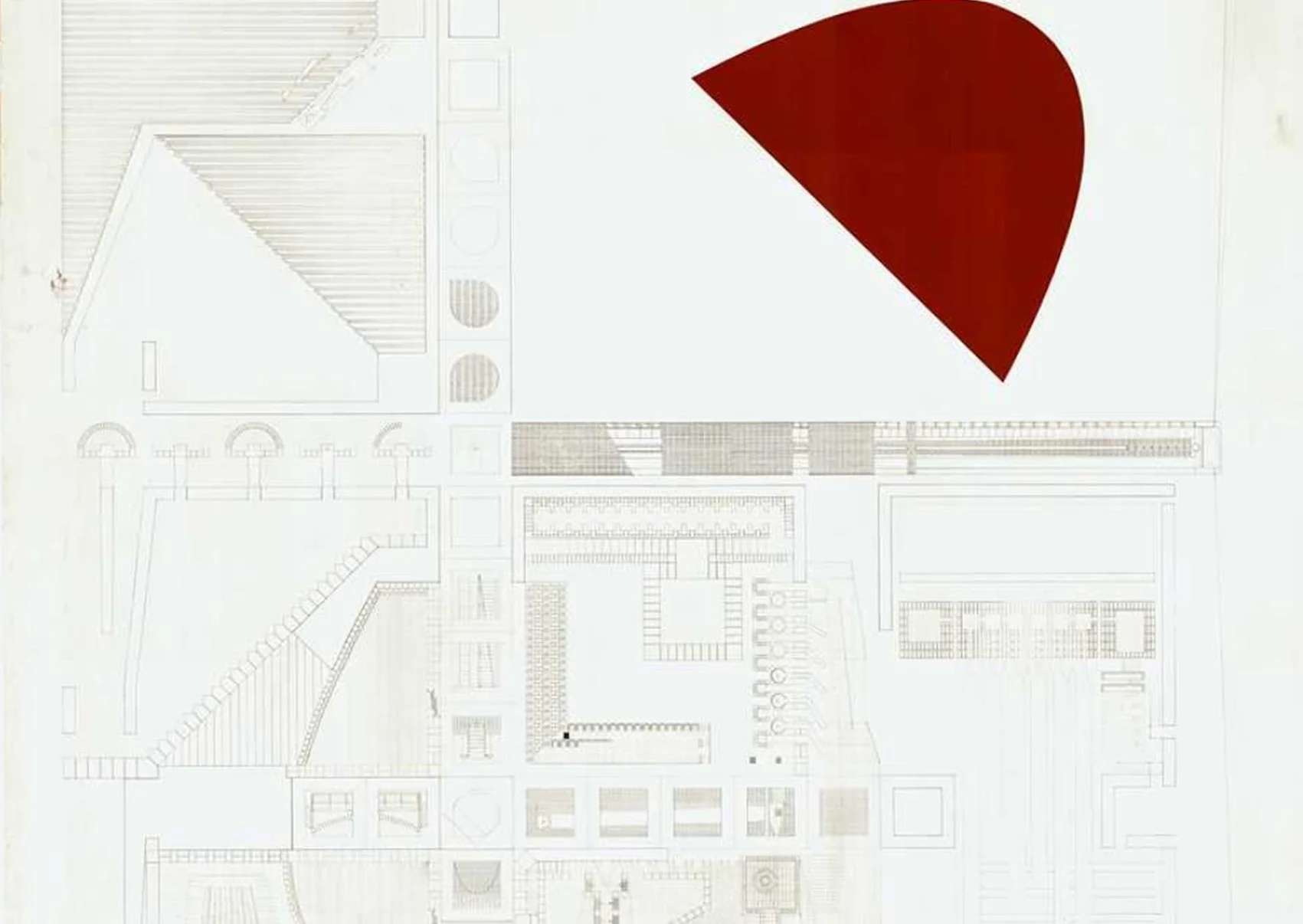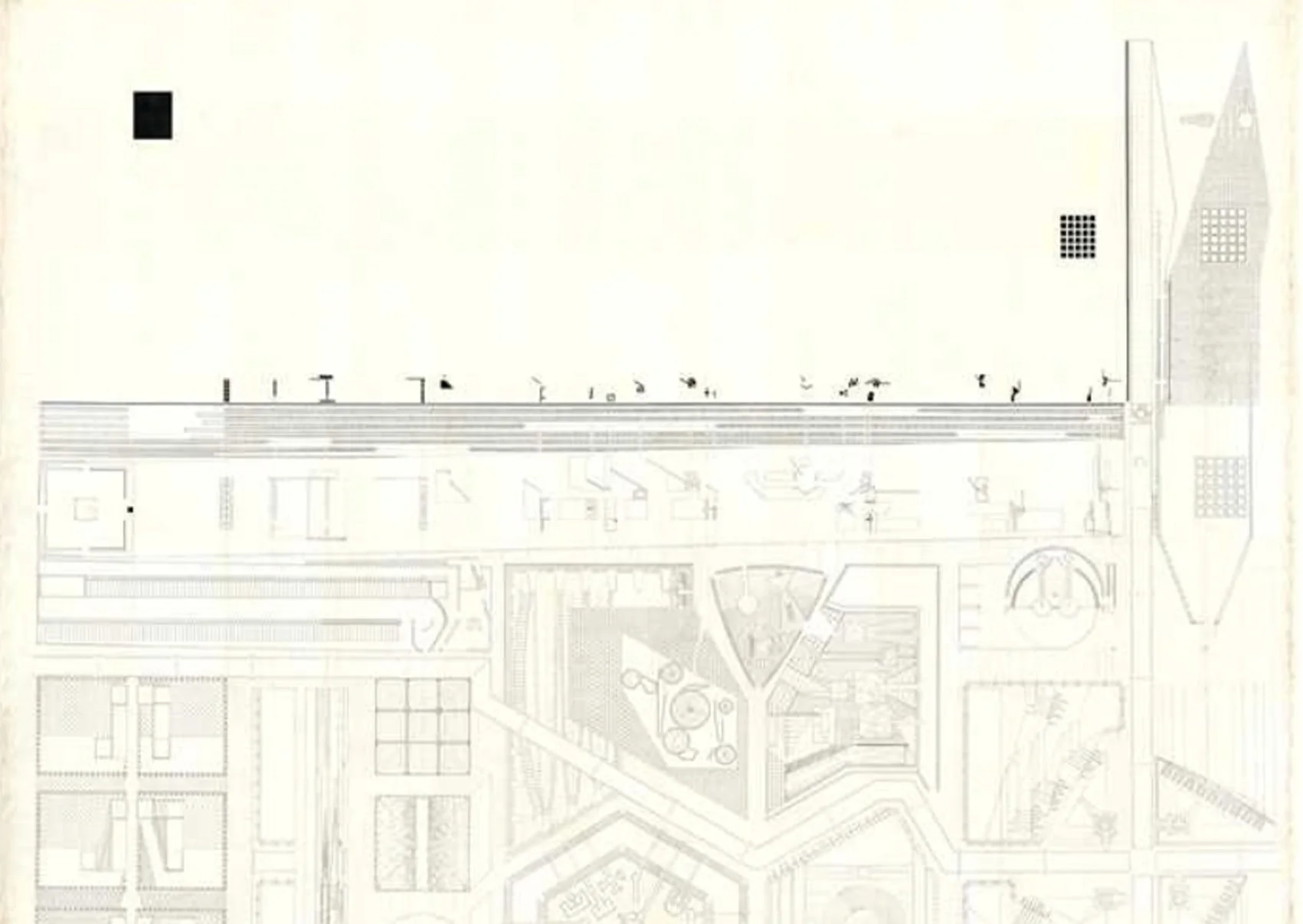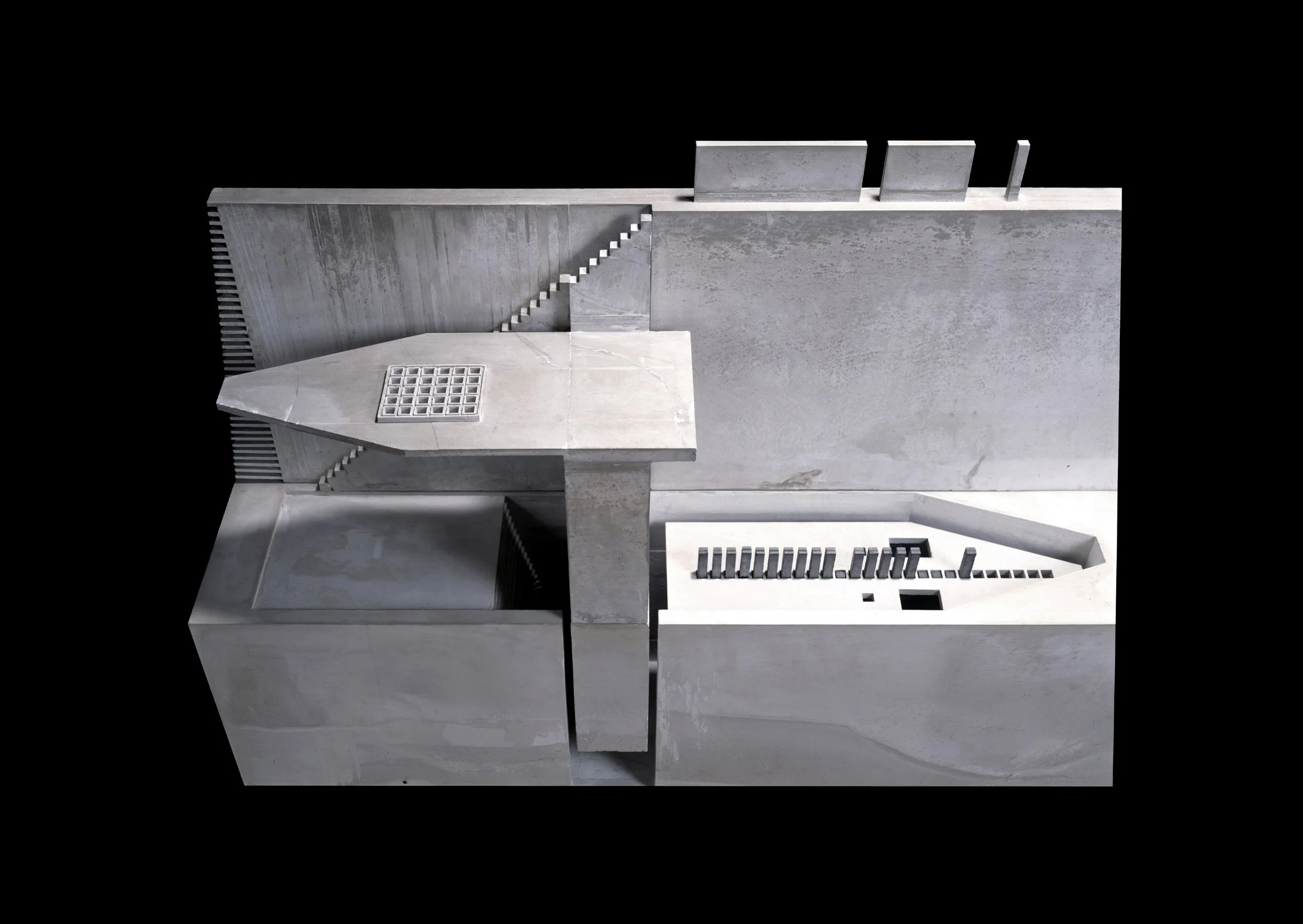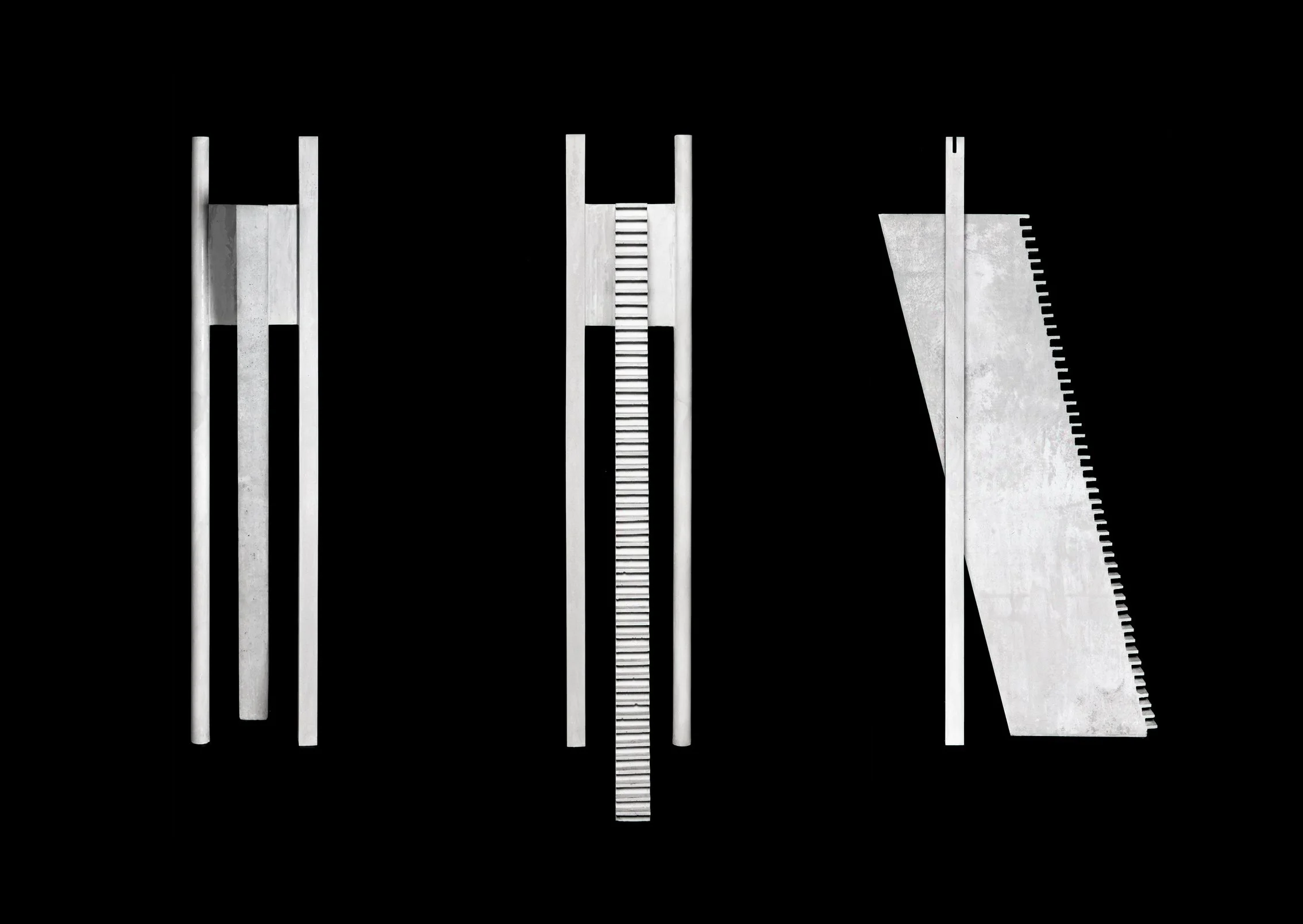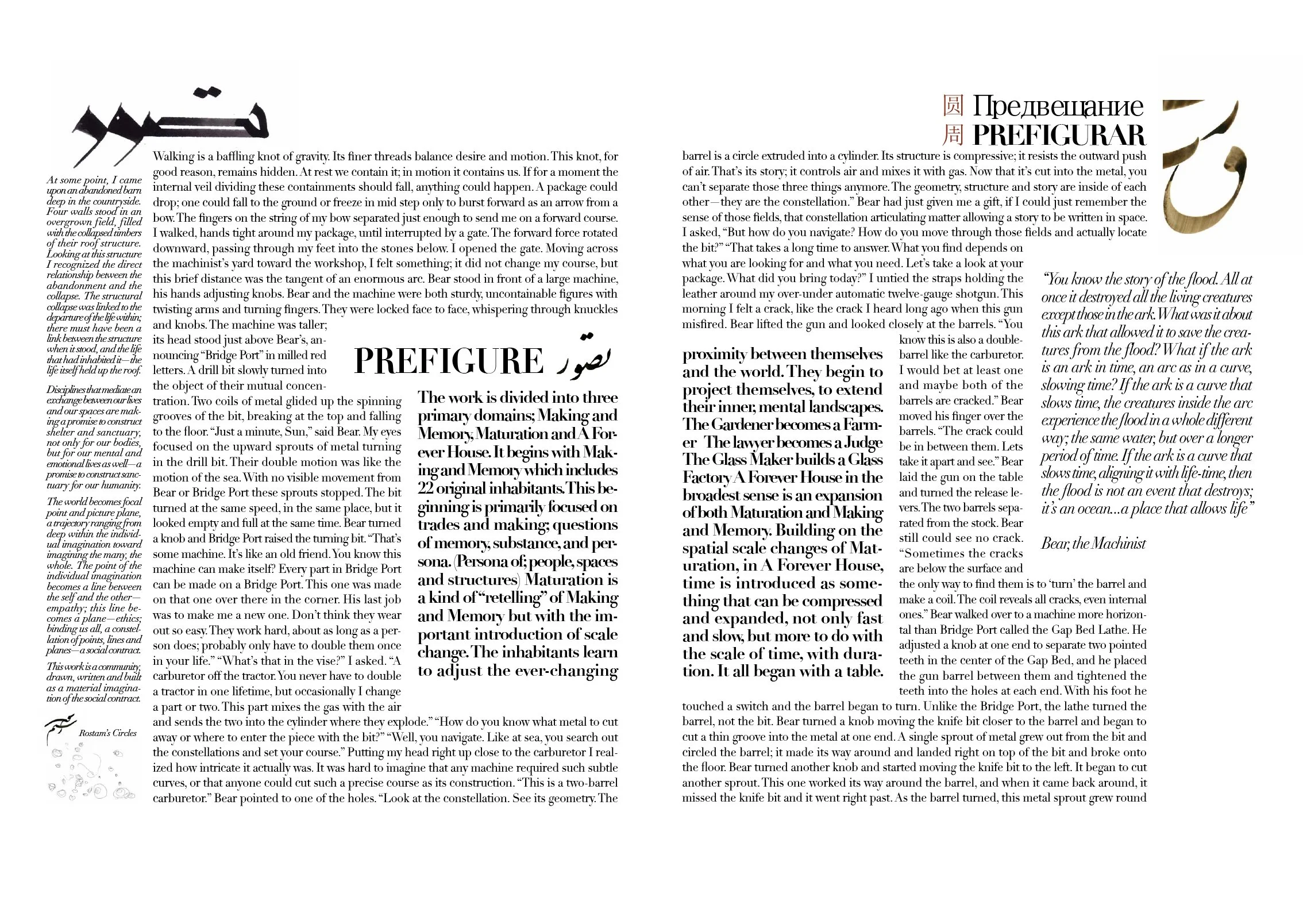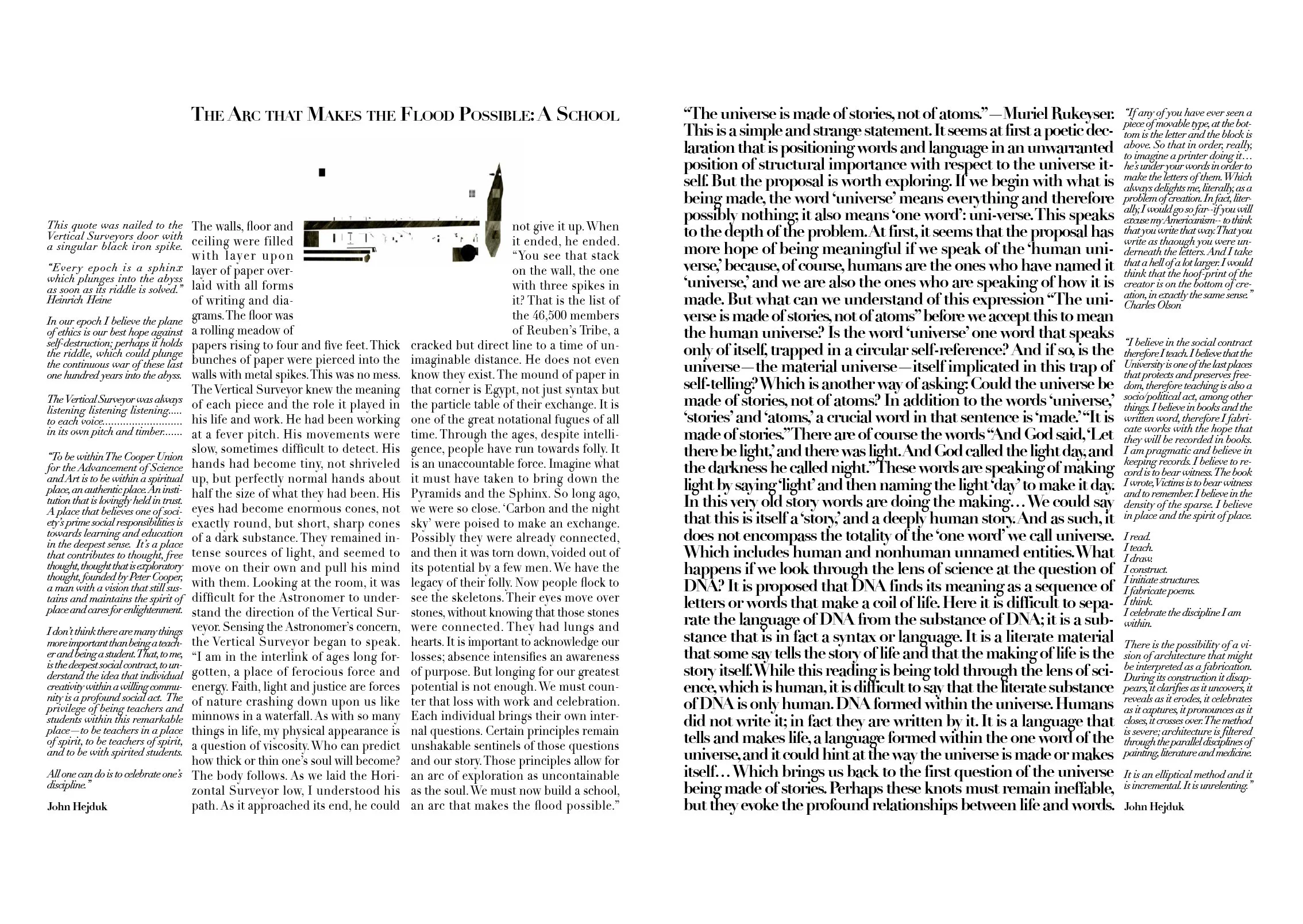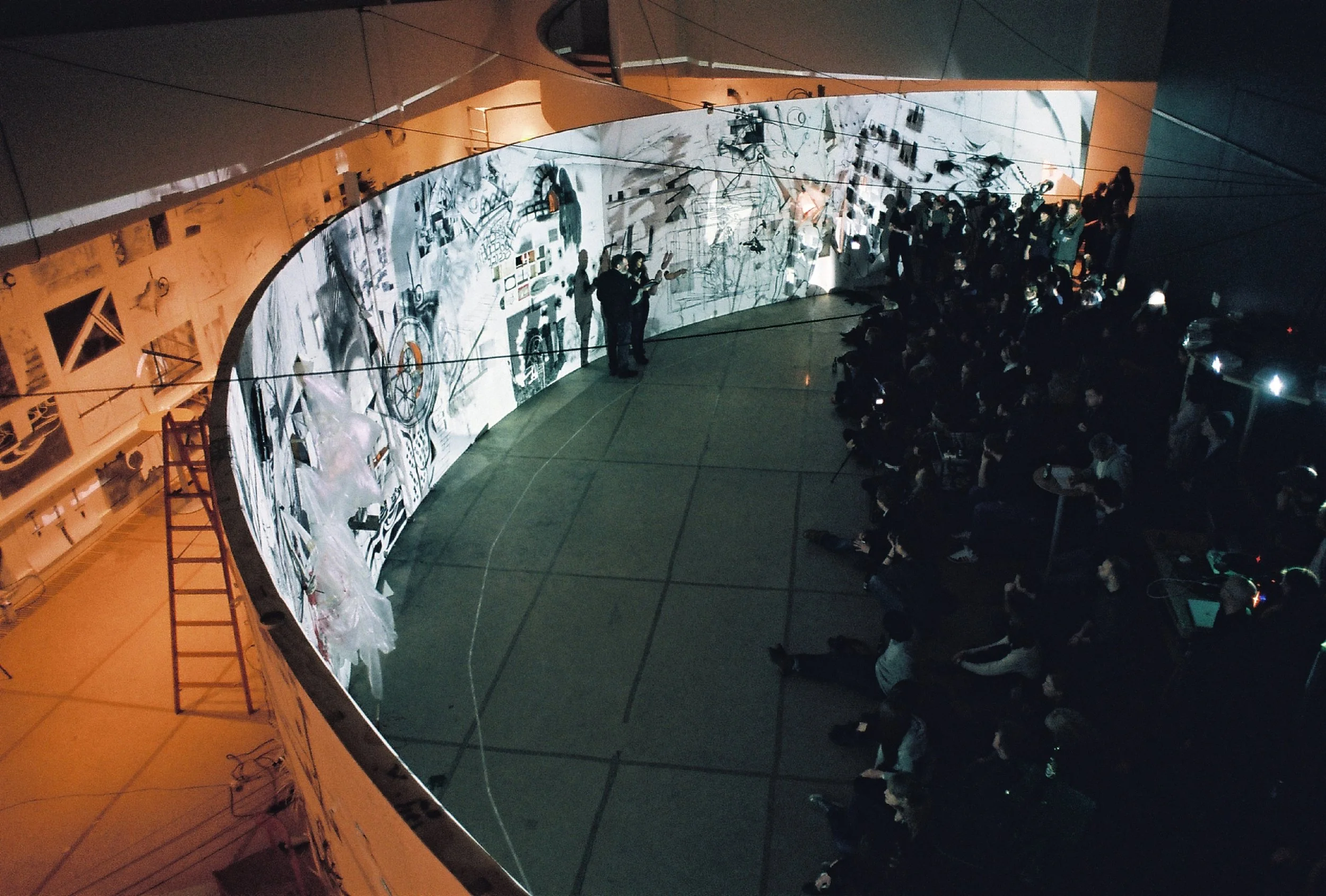APPLICATIONS FOR THIS PROGRAM ARE NOW OPEN
|
APPLICATIONS FOR THIS PROGRAM ARE NOW OPEN |
Semester Studio
September 21-December 5, 2025
Long Tone: Thesis Studio with David Gersten
A new studio for creative exploration across a broad range of disciplines
David Gersten leads an intensive eleven-week studio program rooted in his seminal approach to education as an art form in itself, where our studios become open sites of inquiry, where listening, making and perception converge to form a practice of deep attention and transformation.
Head professor: David Gersten
Where: On-site
When: September to December 2025
Language: English
Positions: 10+ seats (scholarships available)
Dedication: ~75–85 Hours
Program fee: (S) $6,400 – (P) $7,600 *
Contacts: If you have any questions you can reach us at info@artslettersandnumbers.com
Semester Studio
September 21-December 5, 2025
Long Tone: Thesis Studio with David Gersten
A new studio for creative exploration across a broad range of disciplines
David Gersten leads an intensive eleven-week studio program rooted in his seminal approach to education as an art form in itself, where our studios become open sites of inquiry, where listening, making and perception converge to form a practice of deep attention and transformation.
Head professor: David Gersten
Where: On-site
When: September to December 2025
Language: English
Positions: 10+ seats (scholarships available)
Dedication: ~70–75 Hours
Program fee: (S) $5,800 – (P) $6,800 *
Contacts: If you have any questions you can reach us at info@artslettersandnumbers.com

APPLICATIONS FOR THIS PROGRAM ARE NOW OPEN
|
APPLICATIONS FOR THIS PROGRAM ARE NOW OPEN |
/program breakdown
-
There is now an urgent need for exploratory works of ethics and imagination, and it is for all of us to find the questions, works, and movements of our time; to listen to unheard voices, to search for unknown linkages, to ask questions that have not yet been imagined, and to create transformations that embody our best hopes and aspirations. Long Tone: Thesis Studio with David Gersten is a space for exploratory, uncontainable, and independent works ignited by the poetic imagination: works that heighten and expand our spatio-material imaginations. It is a space of inquiry into the human condition and a place for creating the world anew.
In this inaugural offering, Long Tone opens the door to a larger initiative: a cross-disciplinary studio experience in which participants construct their own curriculum as a situation, inhabited, embodied, and grown across time. This is the first of many programs that, together, will begin to shape a new kind of year-round school: an interdisciplinary, immersive space for making, thinking, and listening. These programs will take form as onsite, online, and hybrid semesters, seasonal intensives, and long-form studio experiences, each contributing to the construction of a school built not from institutional protocols, but from people, works, ideas, and atmospheres. Unaccredited by design, this evolving school offers a new paradigm for education, one rooted in rigorous inquiry, situated practice, and shared creative transformation.
-
The students are the curriculum. Long Tone is a cross-disciplinary studio experience in which participants construct their own curriculum as a situation, inhabited and embodied through their interests, curiosities, and questions. The studio is a site of exploration and transformation, an atmosphere within which one can excavate their questions. Whether your medium is paint, movement, language, light, sound, wood, steel, or code, this program is a place to inhabit your work, to create your site, and to build the conditions of perception, understanding, and transformation.
Below is a framework of ideas that can be understood as a starting point:
1. On Language and Shared Questions: We Share Words
We share words, and they move between us. We all collectively participate in an agreement of language, a shared exchange that allows us to communicate with one another and with ourselves through both speech and writing. The consensus of language is an agreement that makes room for disagreement. It reflects the reality that speech is a shared structure of communication that also supports individual expression. This dual nature reveals the profound and inseparable connection between language and ethics. When language acts not only as a tool for communication but as an invitation, it begins to emerge both within us and between us.
2. The Studio as Site and Situation: On Spatial Imagination
“I have often felt, while fighting in the middle of the night to keep drowning lungs afloat or to stanch a flow of blood, that the room about me was participating in the struggle, how more than once the walls gasped, then stood still at the instant of death.” — Dr. Richard Selzer
The room that “participates in the struggle” reveals space as an active participant in our thoughts and actions. This opens the possibility for a communicative exchange between our inner lives and the environments we inhabit. These exchanges do not only arise in moments of life and death. They also appear in quiet gestures, expressing our vulnerability and sensitivity. The exchange between ourselves and the world is reciprocal. As we build the room, the room builds us. The spaces we shape also shape us. They influence us with their structure, their materials, and their character. The studio, in this sense, becomes a constructed situation. It is a site of perception, transformation, and presence.
3. The Studio as Site and Situation: On Material Imagination
We cannot limit our questions to those that can be asked in words. While we aim to use language to express our thoughts, not every inquiry can be spoken. To restrict our questions to what we can verbalize would narrow the range of understanding. We would be setting aside vast and ancient forms of knowing. Some of our most subtle and profound questions do not live in language. We feel them, we sense them, and we experience them in ways that come before words. The situations in which we ask these questions have a strong influence on the kinds of understanding that can emerge. The studio is a space where this kind of embodied, pre-verbal inquiry can take shape.
4. Towards Seeing, Not Showing
We do not draw in order to show; we draw in order to see. This shift in focus transforms drawing into a process of discovery rather than projection. The studio becomes a site of receptivity and attention, where the act of drawing is shaped by the specific atmosphere we inhabit. Our questions and materials interact, forming something that belongs to both the world and the self. This way of working invites understanding that is not imposed but revealed. As the drawing unfolds, so too does our perception. We begin to see more clearly, and the studio itself becomes part of that transformation.
5. Listening as a Form of Imagination
Exploration begins with curiosity. Some questions arrive with urgency, while others come as gentle murmurs. All of them matter. A creative environment must allow these questions to surface and be heard. People are changed when they are truly listened to. Building an atmosphere of trust, where individual interests guide the process, is vital. The act of listening is not only a method, it is the foundation of the school. This is where learning begins.
6. Towards an Of-ness and Is-ness of Drawing
Every drawing holds two conditions: it may be a drawing of something, like a tree, a figure, or a structure, but it also is something. It has a material presence, a physical form, and a spatial reality. A drawing is not only representation, it is also action and matter. Like the voice, which joins breath with language, drawing joins content with substance. The drawing’s of-ness and is-ness coexist. When these qualities resonate, the drawing gains tone and presence. It speaks. This is where our questions begin to live. It is also where we begin to form ways of working that bring together material thinking, poetic insight, embodied understanding, and expression.
7. Where Do We Know What We Know? Inhabiting Our Questions
Someone may read extensively about playing the violin, learn its history, or even construct one by hand. But none of this makes them a violinist. The knowledge of playing is not in the text. It is in the arm, the fingers, the ear, and the breath. It is physical and practiced. This leads to a deeper question, not just how we know what we know, but where that knowledge lives. Where is the knowledge of painting, of physics, of dancing, of conversation? The studio offers one possible answer. It is a space where understanding takes form through action and presence. It is a place where new ways of knowing can be brought into being.
-
The program is structured around three core weekly components, outlined in more detail below. Together, these components form a comprehensive framework for sustained and immersive studio practice. This includes individualized mentorship, collective inquiry, and expansive interdisciplinary engagement. The rhythm of these elements creates the conditions for participants to build their studio as both a personal site and a shared situation.
Studio Visits
Studio Visits are one-hour, weekly, one-to-one sessions with David Gersten. These meetings form the core of the program’s individualized and ongoing mentorship model. They are not institutional critiques or formal check-ins. Instead, these are reflective and open conversations shaped by the participant’s evolving questions and creative process. Whether participants bring drawings, writings, constructions, performances, readings, or loosely formed thoughts, these sessions offer time to explore ideas in depth. Over the course of the program, the studio becomes understood not only as a physical place but as a situation shaped by perception, intention, and presence. This is where a thesis begins, not as a fixed concept or a deliverable, but as a lived inquiry developed through conversation and care.
Listening Non Critiques
Listening Non Critiques are weekly, three-hour group sessions where all Long Tone participants come together to share work, questions, and ideas in an environment of attention and openness. These sessions are not organized around critique or correction. Instead, they emphasize listening as a creative and generative practice. Participants may share in any form they choose, including discussion, gesture, silence, readings, early sketches, or performance. The focus is on what a work reveals, what it invites, and what questions it raises, rather than on how it might be evaluated. Every voice helps shape the tone and direction of the group studio. Listening becomes a shared methodology that supports mutual recognition, creative risk, and collective growth.
Seminar
Seminar is a two-hour weekly session led by David Gersten. It offers a wide ranging and interdisciplinary space for shared inquiry. Rather than following a fixed syllabus, the seminar moves freely through over fifty thousand years of human thought and expression. It draws from areas such as art, architecture, literature, film, theater, music, science, mathematics, technology, philosophy, politics, and religion. The purpose is to open questions and draw connections between individual practices and larger intellectual, historical, and cultural frameworks. Participants are invited to situate their own work in this broader landscape, discovering new perspectives and relationships. The seminar helps develop a shared vocabulary and critical foundation, while allowing new ways of seeing and thinking to emerge through the group’s collective presence.
-
David Gersten is an internationally recognized artist, architect, writer, and educator based in New York City. He was a distinguished professor and Director of Interdisciplinary Learning at The Cooper Union for the Advancement of Science and Art, where he taught from 1991 to 2025, and formerly served as associate dean under Dean John Hejduk and as acting dean of the School of Architecture.
Gersten is the Founding Director and President of Arts Letters and Numbers, a nonprofit arts and education organization dedicated to expanding the idea of what education can be by creating new structures and spaces for creative exchange across a broad range of disciplines and ways of knowing. Arts Letters and Numbers runs studios and workshops in educational and cultural institutions around the world, while also hosting ongoing programs such as studios, seminars, workshops, residencies, youth and mentorship initiatives, lectures, performances, exhibitions, music events, and film productions at its campus in Averill Park, New York.
Gersten collaborates with international organizations, cultural and educational institutions, and education policy groups on a wide array of topics, including interdisciplinary work between the arts, sciences, and humanities, the United Nations Sustainable Development Goals, and forward-looking models for education. He served on the master planning and strategic planning committees of the United Nations International School and was appointed by the Assistant Secretary General of the United Nations to act as lead communicator for A Vision of Education in the Twenty First Century. Gersten also co-directed a collaboration between UNICEF’s Office of Innovation and Arts Letters and Numbers focused on the issue of information poverty in the age of global digital communication. He recently gave a keynote address titled Unlocking the Creativity of Youth at both the UNICEF EXPO and the Chancellors Summit at the Central Academy of Fine Arts in Beijing.
Gersten’s creative work includes drawings, stories, essays, films, prints, performances, buildings, and constructed environments. His work has appeared in international exhibitions and performance venues and is held in the collections of the Canadian Centre for Architecture, the New York City Public Library’s print collection, and numerous private collections. He was recently an official exhibitor in the CITYxVenice Italian Virtual Pavilion at the 17th Venice Architecture Biennale, where he directed and curated the Arts Letters and Numbers exhibition titled SunShip: The Arc That Makes The Flood Possible. He is currently participating in an Extraterrestrial Residency through the Xu Bing Space Art Residency Program. This project involves the first satellite of China’s Star Chain of Arts Project, which was launched into low Earth orbit on February 3, 2024.
Gersten also recently served as Program Director for the 165th Celebration of The Cooper Union, curating an exhibition that reflects on Cooper Union’s history as a social, political, and educational endeavor. He has been a visiting professor at the Rhode Island School of Design, an International Visiting Scholar at the Central Academy of Fine Arts in Beijing, a fellow of the Royal Society of the Arts in the United Kingdom, a member of the Education Reimagined working group, and currently serves on the Board of Directors for Big Picture Learning, a network of more than 200 high schools across the United States and internationally.
-
Long Tone: Thesis Studio with David Gersten is open to all people pursuing any discipline or mode of expression. It is designed for individuals at a pivotal moment in their creative or academic life. It is particularly suited for, though not limited to:
Those entering the final thesis or dissertation year of academic studies (whether undergraduate or graduate)
Those who have recently completed a degree and are looking to delve further into or beyond the cumulative project they worked toward
Those who have been away from their creative practice or taken time away from formal education (for example, a leave of absence, a pause in studies, time off to reflect and regroup) and are looking to reconnect with their work in a meaningful way
The program welcomes artists, makers, and thinkers of all kinds who bring with them a project, a question, or a body of work they are ready to explore more deeply. Participants may arrive with something completely undefined, just beginning, mid-process, or nearly complete. Regardless of stage, the program offers a space to reexamine and reengage, to explore new readings and directions, and to move the work toward a more resonant form.
Open to practitioners across disciplines, including visual arts, performing arts, architecture, literature, film, design, music, and the humanities, the invitation is to construct a studio of your own. This is a space to inhabit your questions, to shape the conditions of your practice, and to build the room that builds you.
-
“We don’t have a lot of rules at Arts Letters and Numbers, but one of them is if we know what is going to happen, we don’t do it.” — David Gersten
Freedom to engage in creative discourse, critical research, and studio practice guided by intellectual curiosity and ethics demands continual transformation, and thrives when the transformation is dynamic and organic. New questions require new outcomes and assessment measures. Fostering an environment that encourages exploratory research and work requires an outcomes assessment approach that is as dynamic and flexible as the research itself.
The aspiration is for participants to develop a focused and substantial body of work that reflects a deep engagement with their own questions, materials, and modes of making. This work may include drawings, writings, constructions, performances, films, music, installations, or interdisciplinary forms that emerge through an ongoing process of exploration, listening, and response. Through regular studio visits, group sessions, and seminar conversations, participants will strengthen their conceptual understanding, expand their material imagination, and learn to communicate the intentions and resonances of their work with clarity and depth.
Participants will also cultivate a personal methodology for inquiry that is grounded in embodied experience, thoughtful experimentation, and a heightened awareness of spatial, material, ethical, and poetic conditions. They will leave the program with a clearly developed studio practice and with tools that support continued growth: the ability to sustain a self-directed process, to collaborate through listening, and to place their work in dialogue with broader cultural and disciplinary conversations.
In addition to their individual studio development, participants will have opportunities to present their work publicly through formats such as readings, performances, installations, exhibitions, or in-progress conversations. These outcomes reflect not only the production of work, but the clarity of direction, depth of inquiry, and confidence to inhabit meaningful questions and continue their creative trajectory beyond the program.
-
The total cost of the program reflects an eleven-week immersive experience at Arts Letters & Numbers, combining housing, studio access, shared meals, seminars, critiques, one-on-one sessions with David Gersten, and guest artist workshops.
Tuition Breakdown:
Program Fee: $2,800
Covers seminars, critiques, individual studio visits, guest artist workshops, and access to all ALN campus facilities.
Housing & Studio Package (includes one communal meal per week):
$3,000 — Shared Room
$4,000 — Private Room
Total Cost (11-week program):
$5,800 — Shared Room
$6,800 — Private Room
A limited number of scholarship positions are available. If you would like to be considered, please indicate this clearly in your application and include a brief note about your financial need.
-
There is now an urgent need for exploratory works of ethics and imagination, and it is for all of us to find the questions, works, and movements of our time; to listen to unheard voices, to search for unknown linkages, to ask questions that have not yet been imagined, and to create transformations that embody our best hopes and aspirations. Long Tone: Thesis Studio with David Gersten is a space for exploratory, uncontainable, and independent works ignited by the poetic imagination: works that heighten and expand our spatio-material imaginations. It is a space of inquiry into the human condition and a place for creating the world anew.
In this inaugural offering, Long Tone opens the door to a larger initiative: a cross-disciplinary studio experience in which participants construct their own curriculum as a situation, inhabited, embodied, and grown across time. This is the first of many programs that, together, will begin to shape a new kind of year-round school: an interdisciplinary, immersive space for making, thinking, and listening. These programs will take form as onsite, online, and hybrid semesters, seasonal intensives, and long-form studio experiences, each contributing to the construction of a school built not from institutional protocols, but from people, works, ideas, and atmospheres. Unaccredited by design, this evolving school offers a new paradigm for education, one rooted in rigorous inquiry, situated practice, and shared creative transformation.
-
The students are the curriculum. Long Tone is a cross-disciplinary studio experience in which participants construct their own curriculum as a situation, inhabited and embodied through their interests, curiosities, and questions. The studio is a site of exploration and transformation, an atmosphere within which one can excavate their questions. Whether your medium is paint, movement, language, light, sound, wood, steel, or code, this program is a place to inhabit your work, to create your site, and to build the conditions of perception, understanding, and transformation.
Below is a framework of ideas that can be understood as a starting point:
1. On Language and Shared Questions: We Share Words
We share words, and they move between us. We all collectively participate in an agreement of language, a shared exchange that allows us to communicate with one another and with ourselves through both speech and writing. The consensus of language is an agreement that makes room for disagreement. It reflects the reality that speech is a shared structure of communication that also supports individual expression. This dual nature reveals the profound and inseparable connection between language and ethics. When language acts not only as a tool for communication but as an invitation, it begins to emerge both within us and between us.
2. The Studio as Site and Situation: On Spatial Imagination
“I have often felt, while fighting in the middle of the night to keep drowning lungs afloat or to stanch a flow of blood, that the room about me was participating in the struggle, how more than once the walls gasped, then stood still at the instant of death.” — Dr. Richard Selzer
The room that “participates in the struggle” reveals space as an active participant in our thoughts and actions. This opens the possibility for a communicative exchange between our inner lives and the environments we inhabit. These exchanges do not only arise in moments of life and death. They also appear in quiet gestures, expressing our vulnerability and sensitivity. The exchange between ourselves and the world is reciprocal. As we build the room, the room builds us. The spaces we shape also shape us. They influence us with their structure, their materials, and their character. The studio, in this sense, becomes a constructed situation. It is a site of perception, transformation, and presence.
3. The Studio as Site and Situation: On Material Imagination
We cannot limit our questions to those that can be asked in words. While we aim to use language to express our thoughts, not every inquiry can be spoken. To restrict our questions to what we can verbalize would narrow the range of understanding. We would be setting aside vast and ancient forms of knowing. Some of our most subtle and profound questions do not live in language. We feel them, we sense them, and we experience them in ways that come before words. The situations in which we ask these questions have a strong influence on the kinds of understanding that can emerge. The studio is a space where this kind of embodied, pre-verbal inquiry can take shape.
4. Towards Seeing, Not Showing
We do not draw in order to show; we draw in order to see. This shift in focus transforms drawing into a process of discovery rather than projection. The studio becomes a site of receptivity and attention, where the act of drawing is shaped by the specific atmosphere we inhabit. Our questions and materials interact, forming something that belongs to both the world and the self. This way of working invites understanding that is not imposed but revealed. As the drawing unfolds, so too does our perception. We begin to see more clearly, and the studio itself becomes part of that transformation.
5. Listening as a Form of Imagination
Exploration begins with curiosity. Some questions arrive with urgency, while others come as gentle murmurs. All of them matter. A creative environment must allow these questions to surface and be heard. People are changed when they are truly listened to. Building an atmosphere of trust, where individual interests guide the process, is vital. The act of listening is not only a method, it is the foundation of the school. This is where learning begins.
6. Towards an Of-ness and Is-ness of Drawing
Every drawing holds two conditions: it may be a drawing of something, like a tree, a figure, or a structure, but it also is something. It has a material presence, a physical form, and a spatial reality. A drawing is not only representation, it is also action and matter. Like the voice, which joins breath with language, drawing joins content with substance. The drawing’s of-ness and is-ness coexist. When these qualities resonate, the drawing gains tone and presence. It speaks. This is where our questions begin to live. It is also where we begin to form ways of working that bring together material thinking, poetic insight, embodied understanding, and expression.
7. Where Do We Know What We Know? Inhabiting Our Questions
Someone may read extensively about playing the violin, learn its history, or even construct one by hand. But none of this makes them a violinist. The knowledge of playing is not in the text. It is in the arm, the fingers, the ear, and the breath. It is physical and practiced. This leads to a deeper question, not just how we know what we know, but where that knowledge lives. Where is the knowledge of painting, of physics, of dancing, of conversation? The studio offers one possible answer. It is a space where understanding takes form through action and presence. It is a place where new ways of knowing can be brought into being.
-
The program is structured around three core weekly components, outlined in more detail below. Together, these components form a comprehensive framework for sustained and immersive studio practice. This includes individualized mentorship, collective inquiry, and expansive interdisciplinary engagement. The rhythm of these elements creates the conditions for participants to build their studio as both a personal site and a shared situation.
Studio Visits
Studio Visits are one-hour, weekly, one-to-one sessions with David Gersten. These meetings form the core of the program’s individualized and ongoing mentorship model. They are not institutional critiques or formal check-ins. Instead, these are reflective and open conversations shaped by the participant’s evolving questions and creative process. Whether participants bring drawings, writings, constructions, performances, readings, or loosely formed thoughts, these sessions offer time to explore ideas in depth. Over the course of the program, the studio becomes understood not only as a physical place but as a situation shaped by perception, intention, and presence. This is where a thesis begins, not as a fixed concept or a deliverable, but as a lived inquiry developed through conversation and care.
Listening Non Critiques
Listening Non Critiques are weekly, three-hour group sessions where all Long Tone participants come together to share work, questions, and ideas in an environment of attention and openness. These sessions are not organized around critique or correction. Instead, they emphasize listening as a creative and generative practice. Participants may share in any form they choose, including discussion, gesture, silence, readings, early sketches, or performance. The focus is on what a work reveals, what it invites, and what questions it raises, rather than on how it might be evaluated. Every voice helps shape the tone and direction of the group studio. Listening becomes a shared methodology that supports mutual recognition, creative risk, and collective growth.
Seminar
Seminar is a two-hour weekly session led by David Gersten. It offers a wide ranging and interdisciplinary space for shared inquiry. Rather than following a fixed syllabus, the seminar moves freely through over fifty thousand years of human thought and expression. It draws from areas such as art, architecture, literature, film, theater, music, science, mathematics, technology, philosophy, politics, and religion. The purpose is to open questions and draw connections between individual practices and larger intellectual, historical, and cultural frameworks. Participants are invited to situate their own work in this broader landscape, discovering new perspectives and relationships. The seminar helps develop a shared vocabulary and critical foundation, while allowing new ways of seeing and thinking to emerge through the group’s collective presence.
-
David Gersten is an internationally recognized artist, architect, writer, and educator based in New York City. He was a distinguished professor and Director of Interdisciplinary Learning at The Cooper Union for the Advancement of Science and Art, where he taught from 1991 to 2025, and formerly served as associate dean under Dean John Hejduk and as acting dean of the School of Architecture.
Gersten is the Founding Director and President of Arts Letters and Numbers, a nonprofit arts and education organization dedicated to expanding the idea of what education can be by creating new structures and spaces for creative exchange across a broad range of disciplines and ways of knowing. Arts Letters and Numbers runs studios and workshops in educational and cultural institutions around the world, while also hosting ongoing programs such as studios, seminars, workshops, residencies, youth and mentorship initiatives, lectures, performances, exhibitions, music events, and film productions at its campus in Averill Park, New York.
Gersten collaborates with international organizations, cultural and educational institutions, and education policy groups on a wide array of topics, including interdisciplinary work between the arts, sciences, and humanities, the United Nations Sustainable Development Goals, and forward-looking models for education. He served on the master planning and strategic planning committees of the United Nations International School and was appointed by the Assistant Secretary General of the United Nations to act as lead communicator for A Vision of Education in the Twenty First Century. Gersten also co-directed a collaboration between UNICEF’s Office of Innovation and Arts Letters and Numbers focused on the issue of information poverty in the age of global digital communication. He recently gave a keynote address titled Unlocking the Creativity of Youth at both the UNICEF EXPO and the Chancellors Summit at the Central Academy of Fine Arts in Beijing.
Gersten’s creative work includes drawings, stories, essays, films, prints, performances, buildings, and constructed environments. His work has appeared in international exhibitions and performance venues and is held in the collections of the Canadian Centre for Architecture, the New York City Public Library’s print collection, and numerous private collections. He was recently an official exhibitor in the CITYxVenice Italian Virtual Pavilion at the 17th Venice Architecture Biennale, where he directed and curated the Arts Letters and Numbers exhibition titled SunShip: The Arc That Makes The Flood Possible. He is currently participating in an Extraterrestrial Residency through the Xu Bing Space Art Residency Program. This project involves the first satellite of China’s Star Chain of Arts Project, which was launched into low Earth orbit on February 3, 2024.
Gersten also recently served as Program Director for the 165th Celebration of The Cooper Union, curating an exhibition that reflects on Cooper Union’s history as a social, political, and educational endeavor. He has been a visiting professor at the Rhode Island School of Design, an International Visiting Scholar at the Central Academy of Fine Arts in Beijing, a fellow of the Royal Society of the Arts in the United Kingdom, a member of the Education Reimagined working group, and currently serves on the Board of Directors for Big Picture Learning, a network of more than 200 high schools across the United States and internationally.
-
Long Tone: Thesis Studio with David Gersten is open to all people pursuing any discipline or mode of expression. It is designed for individuals at a pivotal moment in their creative or academic life. It is particularly suited for, though not limited to:
Those entering the final thesis or dissertation year of academic studies (whether undergraduate or graduate)
Those who have recently completed a degree and are looking to delve further into or beyond the cumulative project they worked toward
Those who have been away from their creative practice or taken time away from formal education (for example, a leave of absence, a pause in studies, time off to reflect and regroup) and are looking to reconnect with their work in a meaningful way
The program welcomes artists, makers, and thinkers of all kinds who bring with them a project, a question, or a body of work they are ready to explore more deeply. Participants may arrive with something completely undefined, just beginning, mid-process, or nearly complete. Regardless of stage, the program offers a space to reexamine and reengage, to explore new readings and directions, and to move the work toward a more resonant form.
Open to practitioners across disciplines, including visual arts, performing arts, architecture, literature, film, design, music, and the humanities, the invitation is to construct a studio of your own. This is a space to inhabit your questions, to shape the conditions of your practice, and to build the room that builds you.
-
“We don’t have a lot of rules at Arts Letters and Numbers, but one of them is if we know what is going to happen, we don’t do it.” — David Gersten
Freedom to engage in creative discourse, critical research, and studio practice guided by intellectual curiosity and ethics demands continual transformation, and thrives when the transformation is dynamic and organic. New questions require new outcomes and assessment measures. Fostering an environment that encourages exploratory research and work requires an outcomes assessment approach that is as dynamic and flexible as the research itself.
The aspiration is for participants to develop a focused and substantial body of work that reflects a deep engagement with their own questions, materials, and modes of making. This work may include drawings, writings, constructions, performances, films, music, installations, or interdisciplinary forms that emerge through an ongoing process of exploration, listening, and response. Through regular studio visits, group sessions, and seminar conversations, participants will strengthen their conceptual understanding, expand their material imagination, and learn to communicate the intentions and resonances of their work with clarity and depth.
Participants will also cultivate a personal methodology for inquiry that is grounded in embodied experience, thoughtful experimentation, and a heightened awareness of spatial, material, ethical, and poetic conditions. They will leave the program with a clearly developed studio practice and with tools that support continued growth: the ability to sustain a self-directed process, to collaborate through listening, and to place their work in dialogue with broader cultural and disciplinary conversations.
In addition to their individual studio development, participants will have opportunities to present their work publicly through formats such as readings, performances, installations, exhibitions, or in-progress conversations. These outcomes reflect not only the production of work, but the clarity of direction, depth of inquiry, and confidence to inhabit meaningful questions and continue their creative trajectory beyond the program.
-
The total cost of the program reflects an eleven-week immersive experience at Arts Letters & Numbers, combining housing, studio access, shared meals, seminars, critiques, one-on-one sessions with David Gersten, and guest artist workshops.
Tuition Breakdown:
Program Fee: $2,800
Covers seminars, critiques, individual studio visits, guest artist workshops, and access to all ALN campus facilities.
Housing & Studio Package (includes one communal meal per week):
$3,000 — Shared Room
$4,000 — Private Room
Total Cost (11-week program):
$5,800 — Shared Room
$6,800 — Private Room
A limited number of scholarship positions are available. If you would like to be considered, please indicate this clearly in your application and include a brief note about your financial need.
Program Director
David Gersten
David Gersten is an internationally recognized artist, architect, writer, and educator based in New York City. He was Distinguished Professor and Director of Interdisciplinary Learning at The Cooper Union, where he taught from 1991-2025 and served as Associate Dean and Acting Dean. He is the Founding Director and President of Arts Letters and Numbers, a nonprofit that supports creative exchange across architecture, design, fine arts, theater, film, music, crafts, humanities, sciences, and social sciences.
Gersten has taught at institutions worldwide, including the Cooper Union, Aarhus School of Architecture, the Rhode Island School of Design, and the Central Academy of Fine Arts in Beijing. He collaborates with educational and cultural institutions, as well as international organizations including UNICEF, the United Nations Academic Impact division, Education Reimagined and serves on the Board of Directors of Big Picture Learning.
FULL BIO →
/drawings
/models
/writings
/workshops
/lectures & conversations
David Gersten: Two Talks on John Hejduk (Hejduk, Hamlet and the Ghost Promise)
David Gersten
Spatial Literacy: where do we know what we know?
TEDxCooper Union
David Gersten presents New York City, a 5000 Year History
David Gersten at The Great Hall
/FAQ
-
A: Absolutely. The program is designed to support participants from a wide range of backgrounds. What matters most is your willingness to explore the intersection of disciplines and commit to a rigorous, immersive process.
-
A: While the program meets thrice weekly, it’s intensive. You should anticipate dedicating substantial independent time to your practice between sessions, especially as ideas develop and evolve.
-
A: That’s perfectly fine—and in fact, welcomed. This program invites you to arrive with questions, fragments, or even uncertainty. The goal isn’t to finish a polished product, but to engage in a generative process of discovery, where new ideas, connections, and forms may emerge organically.
-
A: The structure offers rhythm and support—through studio visits, seminars, and group dialogue—but the content of your work is self-directed. You will be guided through conversation and encouraged to listen to your own curiosities, not handed assignments to complete.
-
A: Here, listening is a core method of working. It’s about receiving—others, space, materials, and yourself—with care and attention. The program reimagines critique as listening non-critiques: spaces where participants reflect, share, and hear each other, rather than judge or rank.
-
A: Not expected—but encouraged to explore. Whether you’re a writer, architect, painter, or performer, the program invites you to stretch your practice through drawing, writing, making, or combinations thereof. It’s about expanding the boundaries of your medium, not abandoning it.
-
A: That’s part of the ethos. This program values seeing over showing, meaning that the process of inquiry—what you come to understand, question, or feel—is just as vital as any outward expression. Your studio is a space of perception, not performance.
-
A: It’s not about poetry as genre—it’s about cultivating attentiveness, empathy, and the ability to engage with complexity. It’s a way of thinking that resists easy answers and embraces layered, open-ended inquiry across mediums.
-
A: If you’re seeking a space to explore rather than prove, to ask rather than resolve, and to work within a thoughtful, interdisciplinary community—then this program is likely a good fit. It’s for people looking not just to make something, but to inhabit a way of making.
-
A: Absolutely. The program is designed to support participants from a wide range of backgrounds. What matters most is your willingness to explore the intersection of disciplines and commit to a rigorous, immersive process.
-
A: While the program meets thrice weekly, it’s intensive. You should anticipate dedicating substantial independent time to your practice between sessions, especially as ideas develop and evolve.
-
A: That’s perfectly fine—and in fact, welcomed. This program invites you to arrive with questions, fragments, or even uncertainty. The goal isn’t to finish a polished product, but to engage in a generative process of discovery, where new ideas, connections, and forms may emerge organically.
-
A: The structure offers rhythm and support—through studio visits, seminars, and group dialogue—but the content of your work is self-directed. You will be guided through conversation and encouraged to listen to your own curiosities, not handed assignments to complete.
-
A: Here, listening is a core method of working. It’s about receiving—others, space, materials, and yourself—with care and attention. The program reimagines critique as listening non-critiques: spaces where participants reflect, share, and hear each other, rather than judge or rank.
-
A: Not expected—but encouraged to explore. Whether you’re a writer, architect, painter, or performer, the program invites you to stretch your practice through drawing, writing, making, or combinations thereof. It’s about expanding the boundaries of your medium, not abandoning it.
-
A: That’s part of the ethos. This program values seeing over showing, meaning that the process of inquiry—what you come to understand, question, or feel—is just as vital as any outward expression. Your studio is a space of perception, not performance.
-
A: It’s not about poetry as genre—it’s about cultivating attentiveness, empathy, and the ability to engage with complexity. It’s a way of thinking that resists easy answers and embraces layered, open-ended inquiry across mediums.
-
A: If you’re seeking a space to explore rather than prove, to ask rather than resolve, and to work within a thoughtful, interdisciplinary community—then this program is likely a good fit. It’s for people looking not just to make something, but to inhabit a way of making.
/in a nutshell
Frequency
3 Days/Week (Tue, Wed, Thu)
Positions
10+ seats & (scholarships available)
Contact



